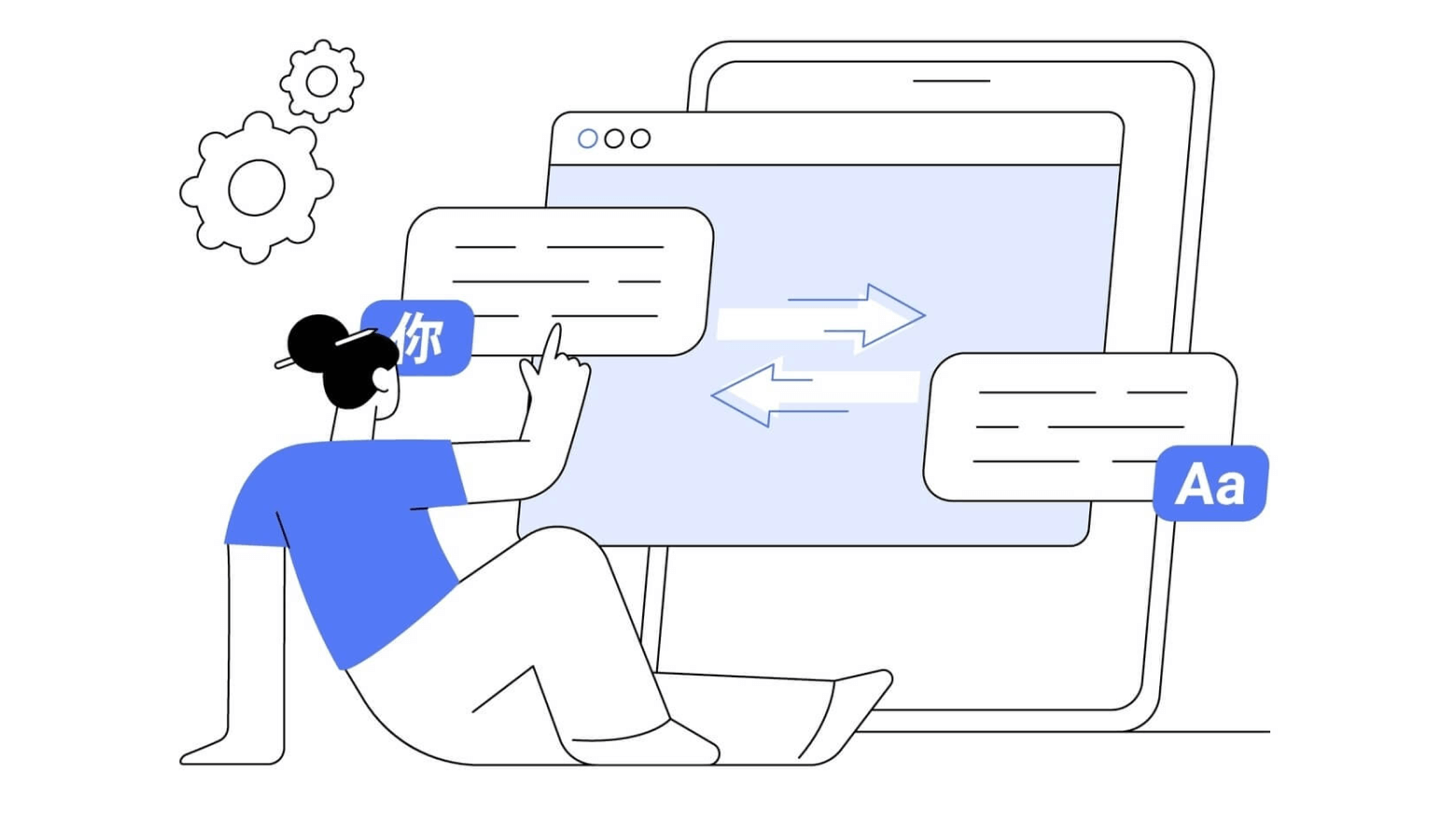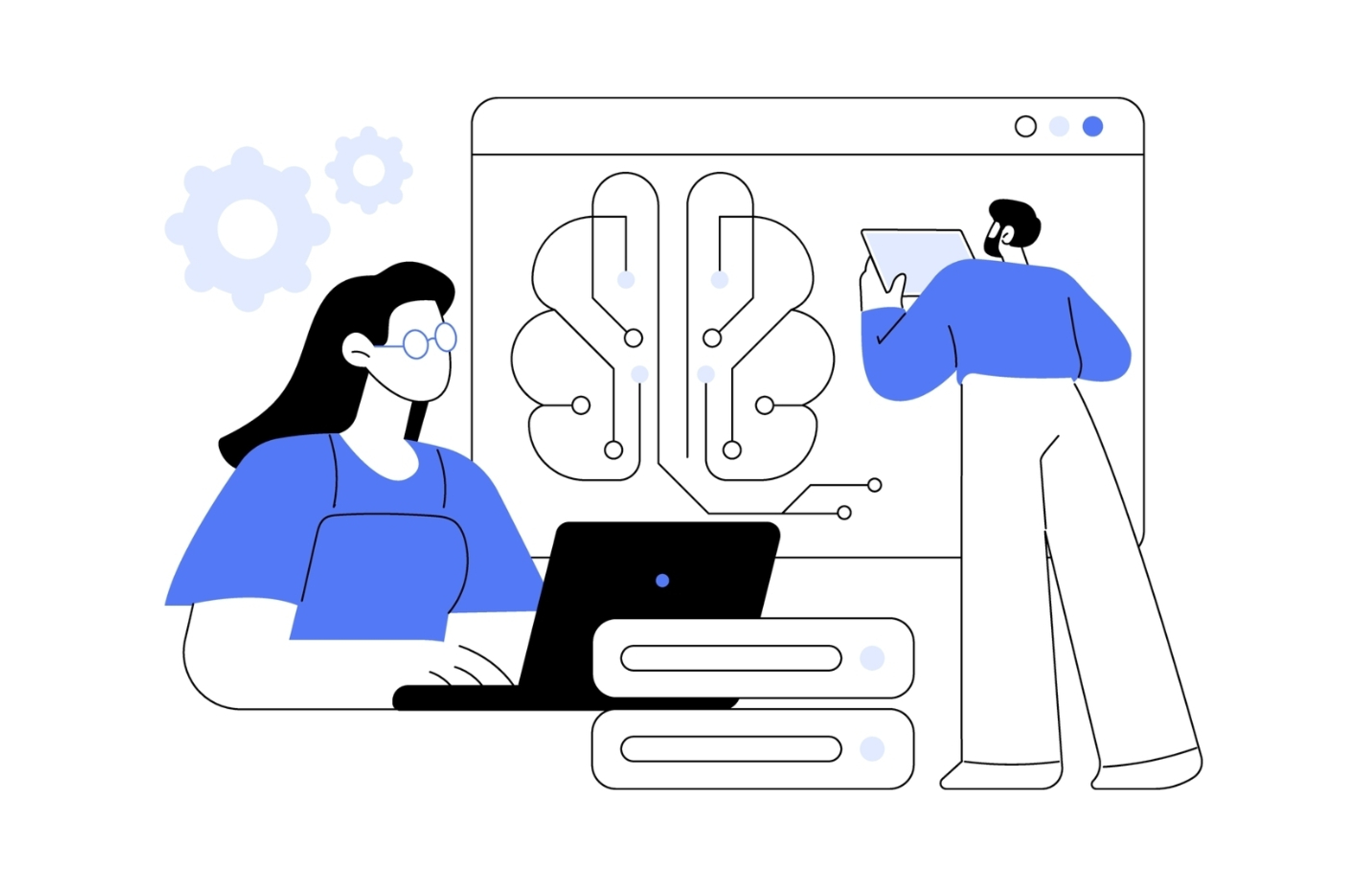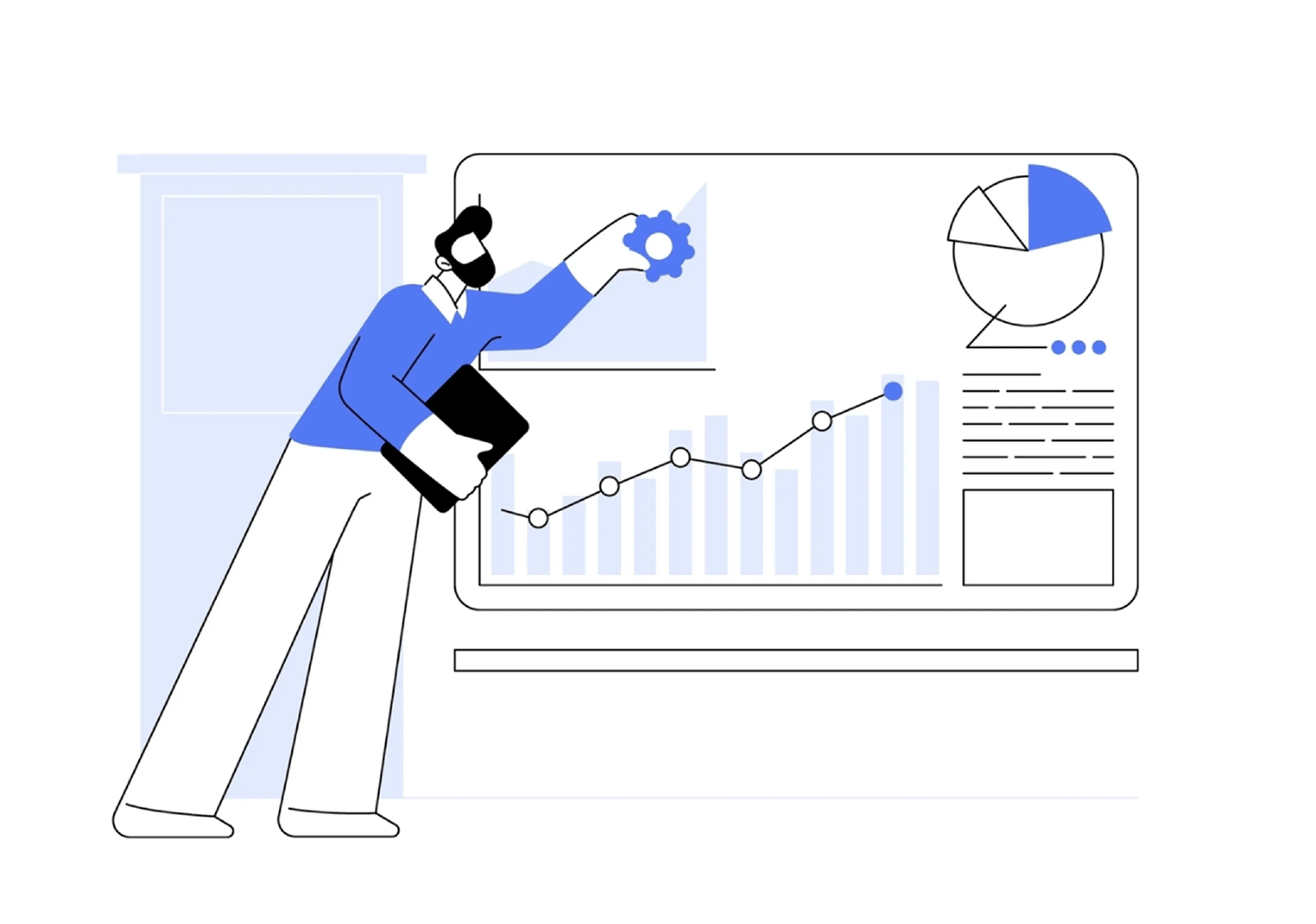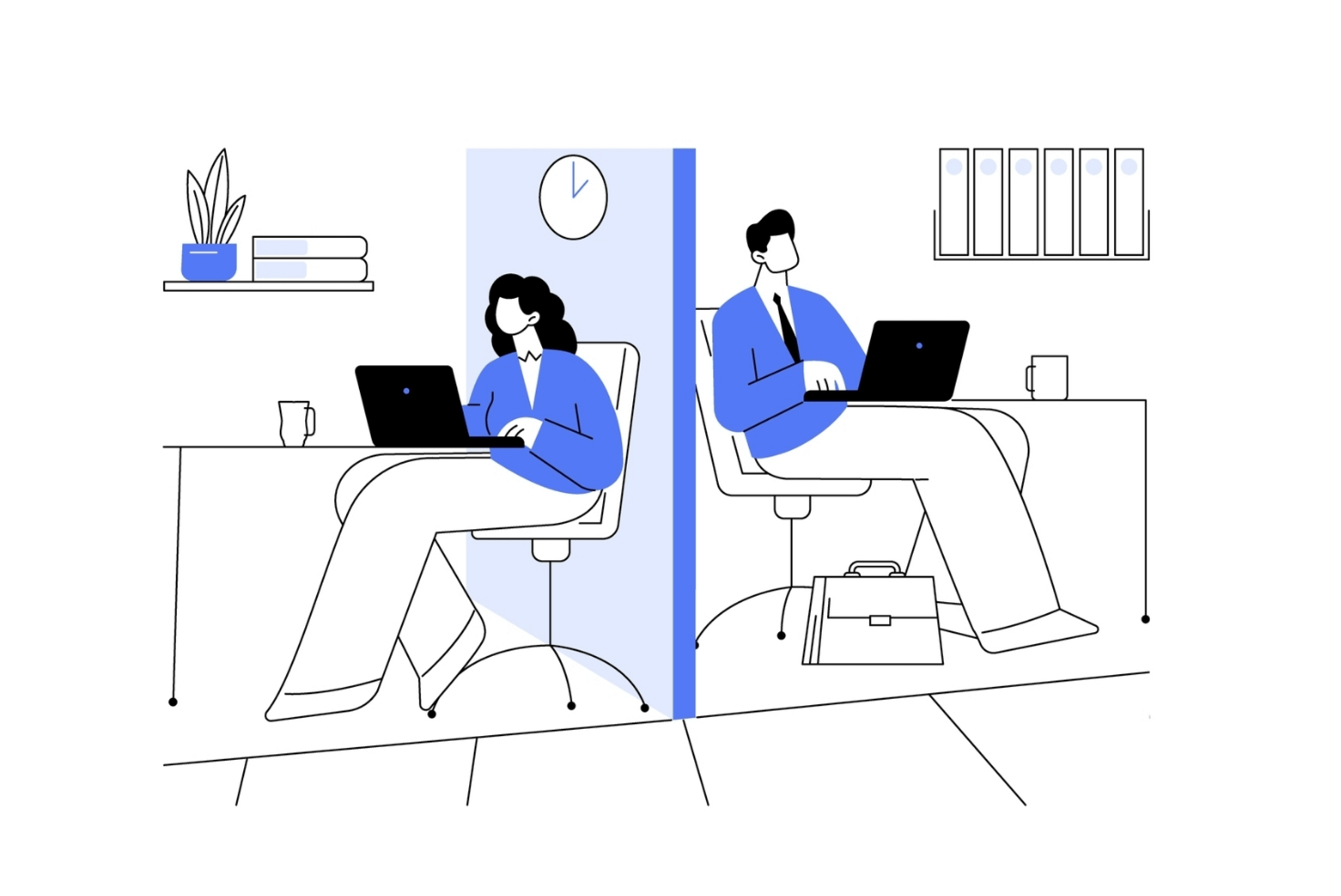Machine translation (MT) is used for rapid processing of large volumes of text. It not only translates, but also allows you to convey a message in a way that perfectly resonates with the target audience. Just as a chef at a famous restaurant carefully selects ingredients and cooking techniques to suit the tastes of each guest, machine translation must take into account the requirements and cultural characteristics of the audience for which the content is created.
Modern technologies allow MT to be customized to the specific needs of people. In this article, we will take a closer look at the process of customizing MT engines and how businesses can benefit from it.

What is Machine Translation Customization?
Machine translation customization is a process of adapting machine translation engines to meet specific user needs, contexts, and preferences. It helps to improve the quality of translation in specialized fields or for specific tasks, making the translation more precise, relevant, and tailored to the needs of its users.
Unlike generic MT, which is designed to handle broad, open-domain content, customized MT is optimized to reflect the language patterns, vocabulary, conventions, and quality expectations of a defined audience or industry. This may involve integrating company-specific terminology, adjusting tone and formality, enforcing brand voice, or training the model on domain-relevant datasets so it better understands specialized contexts.
The Evolution of MT Customization
To truly appreciate the benefits of customizable machine translation, it is important to understand how the concept of customization itself originated and developed. The earliest MT systems of the 1990s and early 2000s were rule-based, and later statistics-based, which made any form of customization extremely difficult and accessible only to organizations with their own computational linguists. Customization at that time meant manually writing linguistic rules, creating domain dictionaries, and maintaining large statistical phrase tables. These processes were expensive, slow, and difficult to scale.
The turning point came around 2014 with the advent of neural machine translation (NMT), which significantly improved translation fluency but initially required huge parallel datasets and specialized GPU infrastructure to adapt models to specific domains. As a result, only large technology companies and scientific organizations could afford full customization of MT. Most businesses continued to use universal engines because the cost and labor intensity of creating specialized models were too high.
In 2017, ML providers began making customization more accessible to language enthusiasts and developers. A key moment was the emergence of Google's AutoML in 2018, designed to democratize the configuration process. Google CEO Sundar Pichai emphasized that AutoML would allow a wider range of developers to create specialized neural networks.
In the early 2020s, technologies such as simplified model retraining, terminology implementation, and user feedback training further lowered the entry threshold. Customization has gradually evolved from a highly specialized ML task into a practical feature built into many ML platforms.
Today, in 2025, customization is both more advanced and more accessible. Modern workflows based on NLP and advanced LLMs support glossaries, style control, domain customization, and adaptive learning. As a result, organizations of any size can adapt ML systems to their terminology, regulatory requirements, and communication style, making customization a key capability of modern multilingual content strategies.
Types of MT Customization
There are several recognized types of MT customization, each reflecting how deeply the customer is involved in modifying the system.
- Cosmetic customization focuses on surface-level adjustments such as glossaries, terminology rules, and formatting preferences.
- Transparent customization improves the engine internally based on collected data, without requiring direct configuration from the user.
- Adaptive customization allows the system to learn continuously from post-editing and user feedback, improving quality over time.
- Collaborative customization involves active cooperation between the MT provider and the customer, using domain data, corpora, and linguistic requirements to fine-tune the system.
In addition to these types, customization is often categorized by depth.
- Light customization refers to quick and low-effort improvements, such as applying glossaries, adjusting terminology, or learning from ongoing edits, typically without retraining the full model.
- Full customization, on the other hand, involves extensive fine-tuning or training the MT engine on large domain-specific datasets, enabling the model to learn industry language, structure, style, and terminology at a much deeper level. Full customization requires more data and effort, but delivers the highest gains in translation accuracy and relevance.
The Value of MT Customization
The main value of machine translation customization lies in significantly improving translation quality. While universal MT engines strive to provide a single translation option “for everyone,” customized MT is trained on data, terminology, and style specific to a particular industry, allowing it to understand the professional context much more accurately. As a result, the system generates translations that sound natural, use correct terminology, and match the company's brand voice.
The improved quality directly reduces the amount of post-editing required. Translators spend less time correcting terminology errors, eliminating stylistic inconsistencies, and rephrasing unnatural sentences. Over time, continuous training based on user feedback further improves the model, turning it into a reliable, specialized linguistic asset rather than just a universal tool.
For global companies, this means faster multilingual content delivery, greater linguistic consistency across markets, and an improved user experience. By ensuring translation accuracy and contextual relevance from the outset, a customized MLMT not only improves the quality of the output, but also strengthens the brand and customer trust around the world.
Business’s Benefits from MT Customization
Machine translation customization is especially valuable for organizations that require accurate, consistent, and domain-specific translations. Different industries can reap unique benefits from this:
- Healthcare & Pharmaceuticals. Medical documents, clinical trial reports, patient information leaflets, and regulatory texts demand extremely high accuracy. Customized MT ensures proper terminology is used, reducing the risk of errors and improving compliance with medical and legal standards.
- Finance & Banking. Financial reports, investment analyses, contracts, and banking communications often contain domain-specific jargon and precise numerical expressions. MT customization helps maintain accuracy and consistency, preserving clarity and trust across languages.
- Hospitality & Travel. Hotels, airlines, and travel agencies require translations that maintain brand tone while being culturally sensitive. Customized MT can handle service-related terminology, booking details, and promotional content, ensuring a smooth experience for international customers.
- SaaS & Technology. Software documentation, user guides, and interface content contain technical terminology that general MT engines may mistranslate. Custom MT models can learn product-specific terms, abbreviations, and style guidelines, ensuring accuracy and usability for end-users.
- E-commerce & Retail. Product descriptions, marketing materials, and customer support content need to be clear, persuasive, and accurate. MT customization enables translations that preserve brand voice and appeal to local markets, while handling large volumes of multilingual content efficiently.
- Automotive & Manufacturing. Technical manuals, assembly instructions, safety documents, and engineering specifications require highly precise translations. Customized MT ensures terminology consistency, reduces post-editing effort, and supports compliance with international standards.
A Brief Look at the Training of Custom MT Models
Training a custom MT model is a multi-stage process that goes beyond simple fine-tuning and involves creating or significantly changing the internal parameters of the system. Unlike customization, which adapts an existing model, training requires large amounts of high-quality bilingual data, typically at least 15,000 unique parallel segments. This data helps the engine learn domain-specific terminology, grammar, and phrasing patterns from scratch.
The process usually begins with data collection and preparation. Translation databases, linguistic corpora, and other curated datasets are cleaned, aligned, and normalized so that the model is trained only on accurate and relevant examples. During training, the system repeatedly processes these examples, adjusting billions of internal weights until it can reliably produce high-quality results that meet the domain specifications.
After initial training is complete, models undergo an evaluation and refinement phase. Developers test the engine on unseen data, measure quality metrics, and identify areas where terminology, sentence structure, or domain accuracy need improvement. Additional rounds of fine-tuning may be possible, supported by feedback from linguists or performance analytics.
Although training a custom MT engine requires more time and resources than standard customization, it provides the highest level of control and can bring long-term benefits, especially for organizations working with complex and large-scale multilingual content where universal models are insufficient.
Data Preparation for MT Customization
Preparing data for machine translation customization is a critical step in obtaining high-quality, specialized translations. At a minimum, MT systems require representative examples of the language and terminology used in the target domain. These can be websites, instructions, product descriptions, support documents, or any other texts that reflect the style, tone, and vocabulary characteristic of your business. The better the data represents your domain, the more effectively a well-configured MT system will be able to learn to produce accurate and contextually correct translations.
Data can be monolingual or parallel, although parallel data is ideal. Monolingual examples are often easier to collect and can still be used to guide data selection or fine-tuning. For instance, in a notable approach by Vu and Moschitti (2021), customers provide monolingual domain-specific texts, and a classifier automatically selects parallel sentences from large web corpora that closely match the target domain. Fine-tuning an MT model on these selected sentences allows it to reflect domain-specific terminology, style, and syntactic patterns without requiring extensive manually curated parallel corpora.
Machine translation (MT) customization relies on high-quality, well-prepared data that guides models toward accurate, domain-specialized, and stylistically consistent translations. The two key pillars of effective MT customization are translation memories (TMs) and corpora.
Translation memories serve as the foundation of MT customization. Previously perceived mainly as repositories of human-translated and proofread content, today they play a key role in training MT engines, helping them reproduce existing translations with high accuracy. These databases record previously approved wording, terminology, and stylistic choices, ensuring consistency in repetitive or similar content segments. For companies working in the field of translation and localization, using TMs is often the first and easiest step toward customizing an MT system.
Corpora complements TMs by providing large, structured collections of texts in multiple languages. These datasets, carefully curated from external or internal sources, supply additional linguistic and contextual diversity, allowing MT models to generalize better across the domain. Corpora can cover various genres and styles, from technical manuals to marketing content or literary texts, and are particularly valuable for handling specialized terminology or less common language pairs.
Parallel and monolingual data also play important roles. Parallel data, available in both source and target languages, ensures the model learns precise word and phrase correspondences. Monolingual data, while only in one language, supports style adaptation, domain vocabulary extraction, and the generation of synthetic parallel data through back-translation.
Human reference translations and annotated data enable even more precise MT tuning. High-quality translation examples help the model capture preferred tone, phrasing, and stylistic nuances, while metadata, such as formality level, audience type, or content category, guides the system to produce contextually correct translations. Contextual data or document-level data, including longer passages or entire documents, supports consistency and stylistic uniformity across large text units.
By thoughtfully combining TMs, corpora, parallel and monolingual texts, human references, and metadata, organizations can create MT systems that not only translate accurately but also preserve domain-specific style, terminology, and tone.
Charting MT Model Evaluation and Fine-Tuning
However, the process does not end after training the model. Real development begins with evaluation and fine-tuning to ensure stable operation of the MT engine in real-world conditions. Evaluation typically combines automated metrics with human expertise, allowing for both measurable accuracy and subjective translation quality to be taken into account.
Automated metrics, such as BLEU, COMET, TER, chrF3, and METEOR, offer quantifiable insights into how closely machine output matches reference translations. These metrics are fast and scalable, making them effective for system-level benchmarking.
Human evaluation plays an equally important role. Using standardized tests, linguists assess aspects such as fluency, appropriateness, style, and domain accuracy, factors that automated metrics may not fully capture.
In many cases, organizations also use post-editing metrics, including TER, editing distance, editing time, and cognitive load indicators. These measurements show not only the quality of the MT output, but also the amount of work that translators have to put into correcting the text, providing a practical assessment of performance.
The insights gained from such evaluations guide further fine-tuning. Problematic patterns, whether incorrect terminology, inconsistent style, or structural errors, can be systematically corrected through additional training rounds or targeted adjustments.
Thus, ML training becomes an iterative cycle: train → evaluate → refine, which ensures not only that the model masters the domain, but also that it continuously improves as new data and user feedback accumulate.
Customization in the Era of LLM
In 2025, machine translation customization will no longer be limited to fine-tuning individual MT engines: it will increasingly be implemented within ecosystems where large language models (LLMs) coordinate translation, quality control, and domain processing. Universal LLM services from providers such as OpenAI or Google are excellent at handling broad general domain tasks, but still fall short when it comes to highly specialized content and are difficult to adapt securely in regulated areas such as banking, healthcare, or insurance. This is where customization becomes critical: companies need translation chains that understand their domain language, comply with internal rules, and do not compromise confidential data when working with external providers.
Recent research on model-based LLM customization as a service shows how this new layer of customization can be achieved without uploading raw data. Instead of sending private domain datasets to the LLM provider for fine-tuning, the client trains a domain-specific expert model on their side (optionally under differential privacy) and uploads only this model. The service then inserts the expert into the base LLM via lightweight connection modules that are trained without direct access to the original data distribution. These experiments demonstrate that this framework can significantly improve domain accuracy under the same privacy budget while keeping inference efficiency close to the original LLM service.
For machine translation, this means that in 2025, customization will increasingly take the form of a hybrid stack: a high-performance MT engine generates translations, an LLM layer interprets context and controls style, and a domain expert model sets reasonable decisions and restrictions for sensitive, critical content. Customization is no longer limited to “training a single MT model on your data”, now it's about tuning the entire system: the MT engine, the LLM layer, and the expert models surrounding them. This approach allows companies to obtain translations that are accurate for the domain and consistent with the brand, while complying with strict confidentiality requirements, making LLM-based customization one of the key areas of MT development in 2025.
Data Cleaning Practices for Machine Translation
TMs and corpora form the foundation of data for MT customization, but their value depends entirely on quality. Before training begins, the dataset must be thoroughly cleaned and standardized so the engine learns correct, consistent patterns. Data cleaning minimizes noise, reduces post-editing effort, and ensures the model reflects domain-specific language accurately.
Key techniques include:
- Filter segments by age. Older translations may not reflect current terminology, branding, or product updates. Filtering by date helps prioritize relevant, up-to-date language.
- Align source and target segments. Misaligned sentences introduce training errors. Automatic alignment tools and spot checks ensure both sides of a segment truly correspond.
- Check segment length. Extremely short or excessively long segments often provide little value and may harm consistency. Filtering improves training stability.
- Remove non-translatables. URLs, code fragments, passwords, placeholders, or template strings do not contribute to linguistic learning and should be excluded.
- Remove duplicates. Duplicate segments artificially inflate the importance of certain patterns and bias the model. Deduplication ensures balanced learning.
- Run language checks. Automatic language detection helps eliminate cases where the source and target contain the wrong language, mixed content, or corrupted text.
- Validate inline tags. Broken or inconsistent formatting tags may cause the model to mis-handle output formatting. Cleaning and standardizing tags improves final translation quality.
By applying these steps, organizations build cleaner datasets that improve translation accuracy, reduce post-editing effort, and ensure stronger MT customization results.
MT Customization vs. MT Training
MT customization: You're starting with a pre-trained machine translation system that already has some translation capabilities. Customization involves adapting it to legal documents. You can adjust the model settings, add a legal dictionary, and include a list of your own terms to improve the accuracy of the results. Since you're working with an existing model, customization can be significantly faster than training a whole new system.
MT training: You're essentially teaching the MT system a new language pair. This requires a massive amount of data, it can be expensive and time-consuming. Training involves complex algorithms that look at the data and learn how to translate better. This needs powerful computers like strong GPUs, which use a lot of electricity. Figuring out the best way to train, including the setup and settings, takes a lot of trying different things and tweaking them. It's a job for experts and can take a long time.
In simpler terms, MT training is like building a whole new house, while MT customization is like renovating an existing one. The choice depends on your goals and resources. If your company lacks sufficient data for training, human and financial resources it's better to opt for MT customization. Ongoing costs for maintaining the glossary over time usually come out cheaper than the expenses associated with MT training.
MT Customization with Lingvanex
If your goal is to implement machine translation that accurately reflects your terminology, industry language, communication tone, and brand standards, Lingvanex offers a direct and simple path to achieving this goal. The platform allows companies to adapt translation models to their own data, translation memories, glossaries, text corpora, product documentation, customer support, without the need for deep knowledge of machine learning or expensive infrastructure.
Lingvanex makes the customization process accessible and efficient. Models can be adapted quickly to specific domains such as finance, healthcare, manufacturing, automotive, retail, and SaaS, ensuring higher accuracy, reduced post-editing effort, and better long-term cost efficiency. Instead of relying on generic MT, companies gain a machine translation engine tailored to their real language use, terminology, and customer expectations.
Companies using Lingvanex's customized MT receive machine translation that fully reflects the real language of their business, terminology, and customer expectations, rather than a universal “one size fits all” approach.
With intuitive tools, scalable architecture, and support for corporate processes, Lingvanex helps deploy customized MT engines faster, allowing organizations to focus on accurate and seamless multilingual communication, increasing profits and reducing operating costs.



